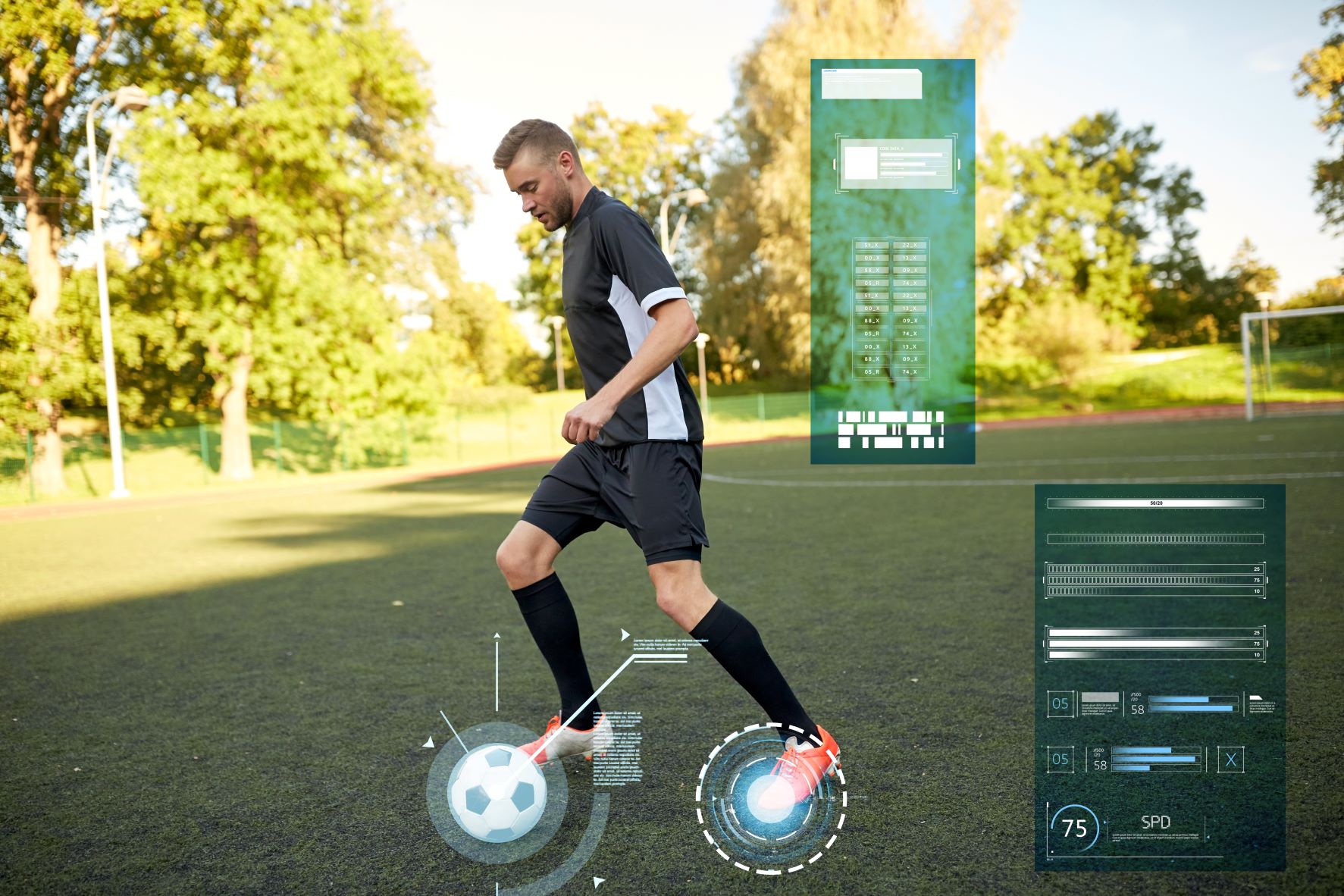What is Goal Line Technology? A brief history of GLT
What is Goal Line Technology? A brief history of GLT
In the modern era of football, with new introductions such as VAR, there is an importance on accurate decision making in football. Use of technology to provide fast and accurate decision making is a priority focus in the world of football. One piece of technology that has been in the sport before the likes of VAR, is Goal Line Technology.
The ability to tell if the ball has crossed the line and award a goal is an important facet in the game, and has avoided controversial decisions such as Frank Lampard’s “ ghost goal” for England against Germany in 2010.
In this insight, we’ll look at the history of Goal Line Technology, the development, implementation, as well as the criticism that has surrounded goal line technology.
History of Goal Line Technology
Goal line technology “is a staple in the football world since it was first implemented in 2014”.
The Premier League were early advocates for GLT, first working with Hawk-Eye in 2006 after an agreement with the International Football Association Board (IFAB) “ to test the system in any non-competitive environment”.
Unfortunately in 2008, IFAB “ruled out the use of any technology in football”, which disappointed the Premier League after successful test periods years prior. Before the official introduction of GLT, there were several trials which took place between July 2011, and July 2012.
These trials were deemed successful tests, and were then announced as ready for the official introduction to the game. The need for GLT was further stressed by the 2009 qualifying play off game, and an incident England fans will be well aware of in the 2010 World Cup Quarter Finals.
In the 2009, FIFA World Cup Qualifying playoff game between Ireland and France, Thierry Henry handled the ball, before setting up William Gallas, who scored to make it 2-1 (on aggregate) to France. This result meant that Ireland were knocked out, and France earned themselves a spot at the 2010 FIFA World Cup.
Another incident was the Frank Lampard famous “ghost goal” against Germany in 2010. The ball clearly went over the line, but was not given by match officials Jorge Larrionda and Mauricio Espinosa.
This was the “catalyst for change after FIFA president Sepp Blatter apologised for the mistake by match officials”.
Since the implementation in 2012, the rules have now been changed in “four laws of the game”, allowing the goal frame and ball to be modified and integrate technology.
The Development of Goal Line Technology
In order to get to where we are today with GLT, there were numerous tests for the technology and many organisations/companies involved playing a pivotal role to develop GLT.
Cairos Technologies (In collaboration with Adidas), GoalRef, Goalminder and Hawkeye (A Sony owned system) all developed initial systems for GLT.
The main organisations responsible for this are IFAB (as they changed the laws of the game to fit his technology), and FIFA who advocated trials for these systems. IFAB officially decided on July 5th in 2012 stating “the potential use of goal-line technology was to be implemented in the Laws of the Game and a certification procedure should control the quality of goal-line technology systems”.
The Cairos Technologies system was testing the modifications for a football with a chip and magnetic field that can be tracked when it passes the goal line. GoalRef is a similar system to Cairos Technologies in the sense that it also works on generated magnetic fields inside the ball, to track when it crosses the goal line.
Goalminder is a camera based system, which is installed in the goal which is not an automatic system, this is used to look back at the footage and determine if the ball crossed the line.
Hawk-eye is another camera based system, which produces images to determine the position of the ball. Hawk-eye systems were already being used in different sports, and the Premier League had previously advocated for the use of this system pre 2011. Hawk-eye is well known for its ball tracking system used in cricket.
The Premier League decided after discussions with other organisations such as GoalRef, Carios and GoalControl, that “the Premier League decided to use Hawk-eye as its GLT provider from the 2013/14 season”. This was rebranded to the GDS (the Goal Decision System).
Implementation of Goal Line Technology
GLT is regularly used in Serie A, Bundesliga, Premier League, EFL Championship, Ligue 1 and some chosen matches in Eredivisie. The Eredivisie “will have access to goal-line technology from the 2023/24 season” after additional cameras have been installed into all Eredivisie stadiums.
It “typically takes around a week to install a system” for GLT, and this can take longer if the venue has challenging conditions. The information provided from GLT is “transmitted within one second which ensures an immediate response from the referee”, this is received on a watch, worn by the match officials.
The FIFA QUALITY PRO certificate runs various tests to ensure the system is fit and ready for use in competitive matches. These tests include “Goal line technology system test: Laboratory tests, Field tests and Real game situations, as well as a Final installation test”, which tests if the system is functional and accurate.
GLT helps the on field officials to make the correct decision as quickly as possible, and can reduce the incidents of human error in officiating. This can ensure the right decision is being made in goal scoring situations, which could be crucial to a team’s season and success.
The advancements of GLT and usage of this at big tournaments and in big competitions is making sure controversial moments do not repeat themselves from the past.
Frank Lampard’s ghost goal in the 2010 World Cup would no lone be the subject of controversy as, “Goal-line technology would catch that now”
GLT was voted the best football innovation of the last 30 years in 2018, and GLT will continue to expand across leagues, as it is doing for the 2023/24 season in the Netherlands.
Criticism of Goal Line Technology
The main concern raised with GLT is “about their implementation and impact on the flow of the game”. Many fans want to celebrate their team scoring a goal and not wonder if the goal will stand due to awaiting a decision from a technological standpoint.
Human error was also considered by some as a big part of the sport, with the referees responsibility being to make decisions that can change the depiction of an entire game.
The amount of money being spent implementing this technology into stadiums is also seen as “expensive, with the vast majority of smaller leagues unable to use it” This can create a feeling that the game is changing at the higher levels, and the distance between the lower league/grass roots football to the higher levels of football is increasing.
The technology is not fault proof, proven in 2022 in an EFL Championship game between Huddersfield Town and Blackpool. Hawk-eye issued a statement saying, “Hawk-eye can confirm that the ball was obscured from the goal-line technology tracking cameras as it moved over the line”. This caused the EFL and PGMOL to state that they “will continue to review standard operating procedures for such occurrences”.
Many argue that if these decisions are not going to be 100% correct every time, then the human element of decision making should be brought back, to improve the flow of the game. The countless occasions that GLT has provided the correct decision in a pivotal moment is the main counter argument for these criticisms.
Without the implementation of GLT, we would still see many goal decisions go the wrong way, which could cost teams massively in the way of relegation or finishing in the top four.
The Future of Goal Line Technology
Goal line technology has its criticisms, such as impacting the flow of the game, taking away the human error/decision making process, and the costs of the technology for lower league clubs.
The technology is constantly developing and the version in place today was developed, tested and refined extensively since its original inception in 2012. The technology required collaboration between technology partners, clubs and football organisations around the world.
Goal Line technology has removed the vagueness of whether the ball has crossed the line. Decisions are available in real time supporting those officiating football, due to less controversial decisions in big moments.
The future of GLT is looking bright, with other leagues (such as the Eredivisie) looking to implement the systems throughout the entire league, and this will continue to grow across world football in years to come. With increased ball tracking, data collection and GPS positioning within grounds the accuracy of the Goal Line Technology systems is also likely to continue to improve.
Related Courses:

AnalyiSport Gift Voucher
£25.00

- Level 1
- Course
Level 1: Foundation in Performance Analysis in Football
£199.00 Original price was: £199.00.£85.00Current price is: £85.00.
Share this article
Our Learning Pathways
AnalyiSport is for everyone who is passionate about analysis in football. Where are you in your development journey?
Become a Football Scout
As more clubs than ever look to build data into their recruitment process, an understanding of recruitment analysis is your ticket to success in the game.
Related Articles
Our team provides news and insights from the cutting edge of football analysis.





